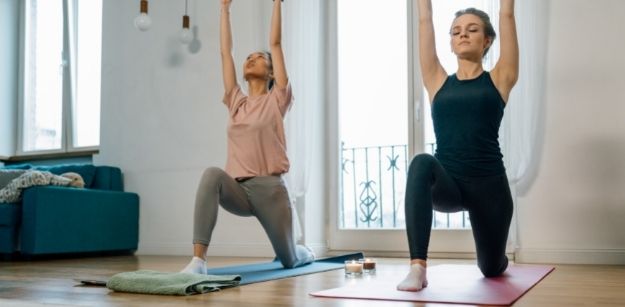When people think of yoga, they are either under the impression that it is incredibly easy and they don’t see what the fuss is all about, or they find the prospect of twisting the body into different shapes incredibly daunting. However, regular yoga practitioners vouch for the physical, mental, and emotional health benefits of this age-old practice. So, if you want to give yoga a go, here are a few basic yoga poses to help you get started.
Mountain Pose for Empowerment
The mountain pose is great for improving posture and can help you feel grounded and empowered. When performed properly, this pose engages your entire body. To perform this pose, stand tall with an open chest and your arms by your side. Your toes should be grasping the floor with your body weight balanced evenly. Keep your head held high with your chin parallel to the ground. Try to keep your mouth, throat, and jaw soft as you breathe in and out. High-quality yoga mats with a mid-level thickness can help give you stability during this pose.
Child’s Pose for Healing
The child’s pose is great for relaxation and is the go-to pose to help your body heal after strenuous exercise. Child’s pose is easy to achieve. Just bend your knees until you reach the ground, lower your chest over your knees towards the floor and push your buttocks to your heels. Your arms should rest on the floor and can either be stretched out in front of your body, placed alongside, or folded and used to prop up your head.
Corpse Pose for Mindfulness
This pose simply involves lying down on the ground with your legs stretched out and your arms by your side. It might appear to be easy at first sight, but many yogis believe the corpse pose to be the hardest one of all. This pose is meant for mindfulness and complete relaxation – which is actually incredibly difficult to achieve. Perform this pose at the end of a yoga session to bring the practice to a close.
Downward-Facing Dog to Boost Flexibility
The downward-facing dog is probably one of the most famous poses and is referenced a lot in pop culture. This posture helps to boost flexibility by decompressing the spine and stretching the limbs, and is also ideal for rib stretches. It can also calm the nervous system while strengthening the shoulders, arms, and legs. This is the foundation pose for many yogi practitioners and is practiced in most sessions. To do it properly, begin by placing both hands and knees on the mat. Your hands should be just in front of your shoulders, while your knees should be directly below your hips. Tuck your toes and take a deep breath. On your next exhale, lift your knees and hips and push back until you achieve a V-shape with your body. Your feet should be hip-width apart and your head should be in line with your arms. Push your heels towards the floor and try to lengthen your back.




















